|

|
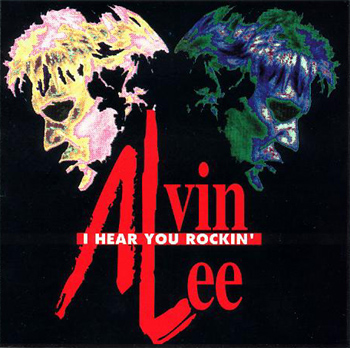
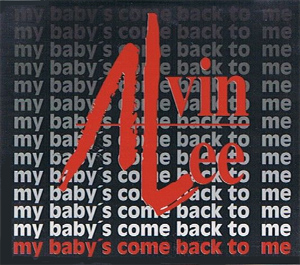
| April 18, 1994 - Alvin Lee filmed live on
stage for the "Ohne Filter Extra" Show on German TV
Track list: Keep On Rockin', Long Legs, I Hear You Knockin', Good Morning Little Schoolgirl, Slow Blues In C, I Don't Give A Damn, Johnny B. Goode, I'm Going Home, Choo Choo Mama, Rip It Up.
It also features a five minute interview with Alvin Lee
|
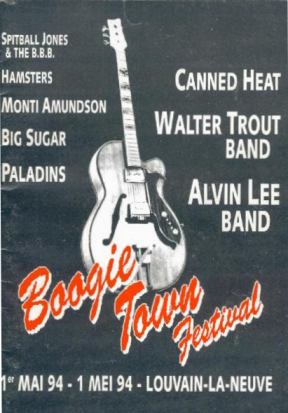
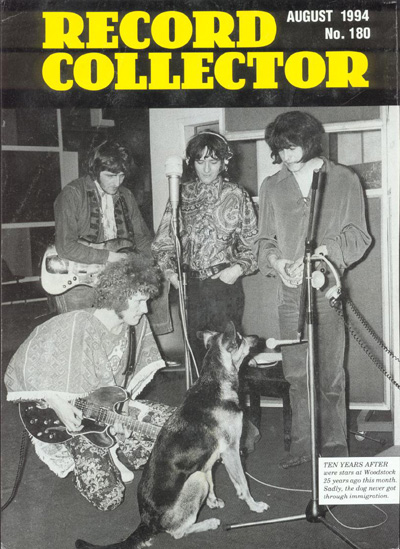
|
Is
There Life After Rock Guitar Godhead ?
Article
by – Roy Trakin – For Musician Magazine 1994
Alvin
Lee had reached the pinnacle of rock guitardom. Of
course, by the time Woodstock was over, his “I’m
Going Home … by helicopter” histrionics would have
been over shadowed by Jimi Hendrix’s climatic “Star
Spangled Banner,” but for that moment, all flying
sweat and flashing fingers, the twenty four year old
Nottingham lad emblazoned himself on the national
consciousness, thanks, in large part, to the subsequent
movie of the event.
Overnight, Ten Years After burst onto the American
rock scene, turning its fiery focal point into a full
– fledged rock star, and making him absolutely
miserable in the process.
|
|
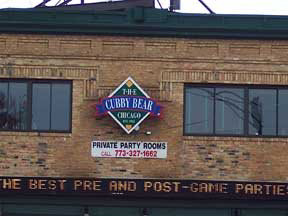
The Cubby Bear Lounge – Alvin Lee –
September 22, 1994
Address – 1059
West Addison Street Chicago, Illinois
“I saw Alvin Lee
at the Cubby Bear Lounge, across from Wrigley Field, a few
years back.
He was the band,
so anything less, is well …less. When I saw them, I think
it was their farewell tour. Apparently, the “Space In
Time” album didn’t fit well with the flying fingers
approach Alvin Lee had with previous Ten Years After
L.P.’s and the fans reacted negatively.
It was all good to
me and still is…Keep on Rocking”.
Alvin Lee at
Club Bene in New Jersey 1994. This is a venue where a
lot of yester-year guitar greats come to play.
|
|
RELIX -
Vol. 21 No. 5
Alvin Lee 30 Years
Later:
By John McDermott
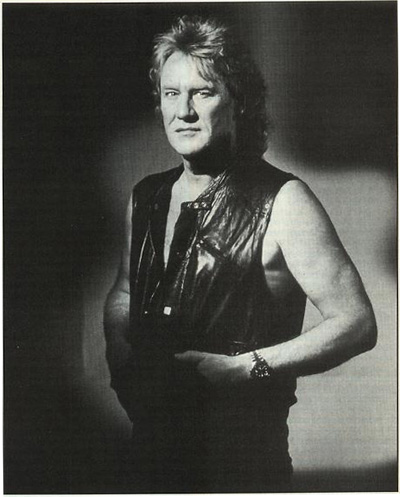 “I love what I’m
doing,” boast Alvin Lee about his musical career, now in
its third successful decade. His satisfied joy can be
heard throughout “I Hear You Rockin´,” the fabled
guitarist’s newest recording from Viceroy Records. Lee’s
career started with early encouragement from his
music-loving family. Born in England’s historic village of
Nottingham in December 1944, Lee’s parents, fans of
diverse pioneers such as Segovia, Leadbelly and Charlie
Christian, supported his early embrace of the guitar. The
direction of his career was steered by a dramatic visit
from one of his idols. “My real love at that time was
Delta country blues,” remembers Lee. “Big Bill Broonzy was
someone I truly admired. I actually met him when I was 12
years old. My parents had gone to one of his gigs and
invited him back to our house afterwards. He was playing
guitar in our front room, and I was sitting on the floor
looking up at him. He so inspired me that day, that I
decided then to become a blues musician like him.” “I love what I’m
doing,” boast Alvin Lee about his musical career, now in
its third successful decade. His satisfied joy can be
heard throughout “I Hear You Rockin´,” the fabled
guitarist’s newest recording from Viceroy Records. Lee’s
career started with early encouragement from his
music-loving family. Born in England’s historic village of
Nottingham in December 1944, Lee’s parents, fans of
diverse pioneers such as Segovia, Leadbelly and Charlie
Christian, supported his early embrace of the guitar. The
direction of his career was steered by a dramatic visit
from one of his idols. “My real love at that time was
Delta country blues,” remembers Lee. “Big Bill Broonzy was
someone I truly admired. I actually met him when I was 12
years old. My parents had gone to one of his gigs and
invited him back to our house afterwards. He was playing
guitar in our front room, and I was sitting on the floor
looking up at him. He so inspired me that day, that I
decided then to become a blues musician like him.”
In addition to
Broonzy’s passionate folk blues, Lee was thrilled by the
exotic electric sounds of another American, Chuck Berry.
“He sounded like the blues with more energy,” said Lee.
Eager to showcase
his own hybrid of blues, rockabilly and rock and roll, the
young guitarist still only 13, formed the “Jailbreakers,”
his first band. Two years later, Lee along with fellow
Nottingham teenager Leo Lyons, formed “The Jaybirds.” By
1964, the Jaybirds had earned considerable notice among
Britain’s burgeoning blues cult via its energetic stage
shows and billing as “Britain’s Largest Sounding Trio.”
Seasoned by many small gigs throughout the country, Lee
and Lyons relocated to London. Lee ability as a soloist,
stood out in that crowed field, which included Mick
Taylor, Peter Green and Paul Kossoff. Eger to measure
their efforts against established blues outfits, like
those headed by Alexis Korner and John Mayall, Lee and
Lyons established Ten Years After, whom they recruited
drummer Ric Lee and keyboardist Chick Churchill for. The
group’s early club appearances had an immediate impact, as
Lee’s fluid dexterity and slashing solos helped to enhance
the group’s momentum.
With the blues
movement in full bloom, the group secured a contract with
Deram, a subsidiary of London Records. “Ten Years After”,
the band’s impressive debut disc, whisked them off to a
rousing start. Lee’s fast advancing reputation and a
coveted Friday residency at London’s Marquee Club,
afforded Ten Years After a critical advantage in an
increasingly competitive field. “Undead”, its second
release, provided them with a U.K. chart break-through,
reaching number two in September 1968. Recorded at Klooks
Kleek, the London nightspot where John Mayall had recorded
his debut disc, the superb “Undead” showcased the group’s
impressive grasp of blues, psychedelic rock and even
elements of jazz and without sacrificing its vaunted stage
energy. By early 1969, the U.K. success of “Undead” and
news of Ten Years After’s incendiary club gigs, had
kindled interest across the Atlantic.
Promoter Bill
Graham invited the group to come to America and perform at
both Fillmores, East and West. Such acceptance helped spur
U.S. sales of “Stonedhenge”, the groups third disc, and
led to an invitation to perform at the Woodstock Festival.
The band enjoyed a warm reception from the massive
festival audience that August 1969 evening. But, it was
the inclusion of a frantic, extended rendition of “I’m
Going Home” featuring Lee’s inspired. Screaming guitar
solo in the documentary “Woodstock” released nine months
after the show, that elevated the group to stardom. “I
know first hand that it was the release of the film that
broke Ten Years After in America,” remembers Lee. “We did
the festival, and it was a very special event and a great
time, but it was just another gig, on a long American
tour. After the festival, we went for nearly a year
performing in venues like the Fillmore East and Fillmore
West, until the movie came out, and that’s when all the
ballyhoo took place. The silver screen does make things
larger than life. That film rocketed us into the stadiums.
A lot of people say that’s what made the band, but in a
lot of ways, it was the beginning of the end, as it wasn’t
much fun playing arenas. Ten Years After moved to the
forefront of the British Blues Movement. “SSSH” and 1970’s
“Cricklewood Green” along with “Watt” each broke
Billboards Top 30, while the earlier albums, “Ten Years
After” and “Undead” enjoyed steady U.S. sales, being
re-discovered by a wealth of new / younger admirers. By
1971, the incredible pace of the group’s success seemed
to have spiralled out of control. Coupled with a rigorous
touring schedule, they recorded four albums in just two
years. This ran in marked contrast to Lee’s own personal
ambition. “I was looking at longevity,” Lee recalls. “My
heroes were people like Muddy Waters and John Lee Hooker.
Today, Hooker’s close to 80, and he’s still playing. I
never wanted to be a pop star, because it seemed so
tasteless and short-lived. I knew very early on, that I
wanted to be a working musician, not a rock star.”
Adamant about
being given enough time to prepare for the group’s next
album, Lee won an uneasy truce for 1971’s “A Space In
Time.” “That title came from me digging my heels into the
ground,” explains Lee. “I told my managers and agents that
I wouldn’t work because I needed time to create good
music. I took six months off to write, because I was tired
of writing lyrics in the back of a taxi on the way to the
studio, then acting as if I had the tunes under wraps for
months. The songs for the first two albums were drawn from
our live repertoire. We already knew these songs well and
knew they worked with our audience.
When we got to
albums three and four, I suddenly had to start writing new
songs, and it was hard to get those songs up to the
quality of the ones we had been playing in our live gigs.”
None-the less,
Lee’s investment paid off handsomely, as the rejuvenated
Ten Years After, on the strength of the album’s hit
single, “I’d Love To Change The World,” enjoyed its
largest selling effort to date. When Lee was vindicated by
the resounding success of,
A Space In Time,
the album’s impressive showing increased the call for
more albums and longer tours. “I didn’t like the so called
big time,” admits Lee. “When Ten Years After first started
to happen in America, it was great. We were playing places
like the Fillmore’s or the Electric Factory and the
Kinetic Playground and those were great gigs, playing
before two thousand people. Later, however, it grew into
playing ice hockey arenas and stadiums, and I hated that.
The music was secondary. People weren’t really listening
to the music, and I was playing to an orchestra pit full
of cops and security guys with their backs turned and
cotton wool in their ears. I was thinking to myself, what
am I doing this for? The answer at the time should have
been money. But the peace of mind that I needed was much
more important than the money. I knew too many people who
had gone under or cracked from that kind on pressure.”
Equally ironic was that while Lee struggled with the
concept of rock stardom, his love for live performance
never diminished.” “Live gigs are what keeps me going.”
Says Lee simply. “It’s in my blood, I put up with all the
travelling and hotel life because it’s part of the
pleasure of performing for people. These days, I actually
find touring easier and more enjoyable. In the early
years, I think I made things hard on myself. We would do a
twelve week tour and I wouldn’t want to work again for
three months. But I’ve learned to pace it more now, three
weeks on, one week off. That way, over a year’s time, you
do more work without having to endure the grim side of it.
If you do more than three weeks at a time, the
performances lose their spontaneity. With Ten Years After,
I used to look at tour itineraries on paper and wonder how
I would live through them, it would just seem so
daunting.”
By 1973, with the
group’s spirited blues rock a staple of then “Underground
F M” stations throughout the U.S. Lee made his move as a
solo artists. Bolstered by the likes of George Harrison,
Steve Winwood, and Mick Fleetwood, Lee joined company with
American vocalist Mylon LeFevre to record 1973’s prophetic
“On The Road To Freedom” album. His heart set on
establishing a solo career, Lee still rallied Ten Years
After to record 1974’s
“Positive
Vibrations”, the group’s swan song. At the close of an
extensive American tour in 1975, Ten Years After formally
disbanded. (although no one officially admitted it).
His reputation
firmly established, Lee began touring and recording under
the umbrella of Alvin Lee and Company. In 1978, the
guitarist formed Ten Years Later, recording two acclaimed
albums, “Rocket Fuel” and “Ride On” before resuming his
solo career once more in June of 1980. Save for a one-shot
Ten Years After reunion in 1988, Lee remains content to
shoulder the load on his own. One notable exception,
however, came in 1981, when former Rolling Stones
guitarist Mick Taylor was recruited to the fold. This unit
toured Europe and the U.S. Reviews of their scintillating,
duel guitar interplay fostered hope that the two might
formalize the partnership and possibly record. Sessions
were held in 1982, but the tapes, says Lee, remain
unfinished and unreleased. “Taylor is such a superb slide
player,” remembers Lee. “We worked well together.” Where
many of his successful contemporaries have struggled to
accept lower profiles and diminished sales significance in
the 1990’s Lee thrives within the parameters he
established. Rather than simply replicate the high-speed
fret-work memorialized by the Woodstock film,, Lee has
continued to refine his sound and style.
“I Hear You Rockin´”
is Lee’s strongest effort in years, attributable to, he
says, a dogged, back-to-the-roots approach to writing and
recording. “Recording this album as I did was almost a
revelation for me,” says Lee. “Normally, because I have a
home studio, I make demos. It takes me about for months to
create fifteen new demos. I’d play them to the band, but I
wouldn’t get any real input from them. They would just try
to assimilate what I had already done as best they could.
This time around, I sat with the band in a room, picked up
my guitar, and played my song ideas to them. This way, the
band joins in, and if a song works in the room, then it’s
going to work live. It’s always been an ambition of mine
to record an album and walk on stage and say, “I’ve just
recorded an album, and here it is for you. With this
album, that’s what I’ve been doing and it’s been a real
buzz!” As so much of Lee’s sound and style is derived from
his raw, charged live performances, it comes as little
surprise, that he chose to capture that same spirit by
recording the album’s basic tracks live in the studio.
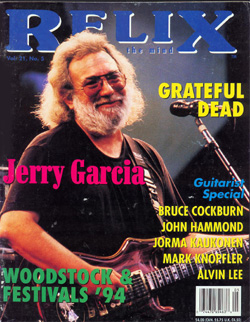 “You have to keep
the technical side of recording studios from taking over,”
argues Lee. “You have to keep
the technical side of recording studios from taking over,”
argues Lee.
“They put the drummer in one room and the guitar player in
another. You can’t even see the guys you’re working with.
Okay, you get a clear sound, but with my kind of music,
it’s the feel that’s important, not the sound. If there
are a few glitches and rough edges, fine, I like that. You
can not beat the eye contact of sitting around and looking
at each other, playing off one another.” “I Hear You
Rockin´” also continues Lee’s intriguing collaboration
with long time friend George Harrison. Harrison guest on a
spirited remake of the Beatles “I Want You” and lends a
salacious slide guitar to Lee’s own, “Bluest Blues,” a
dark moody ballad and the album’s strongest track. “I
first hooked up with George in 1973. when he wrote and
played “So Sad,” a song he wrote for “On The Road To
Freedom,” my first solo album. Following that I played on
George’s “Dark Horse” and 33 1/3 albums for him. Since
then we’ve become very good friends. He’s played on the
last three solo albums I’ve done. I don’t play slide well
and he’s very good, so I call upon George. It’s getting to
be a bit of a tradition, I only wish I could get him out
there with me!” With, or without Harrison in tow, Lee
shows no signs of slowing down. He’s currently formalizing
plans for yet another extensive American tour. “Hey, he
laughs, “I hope I’ll still be at it when I’m 80. It’s a
bit too late for me to get a proper job at this point in
my life, don’t you think?”
|
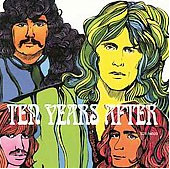
Collection - CD (record label Griffin) - Nov 1994
|
NIGHT
LIFE – By Bill Logey, Special To The Times
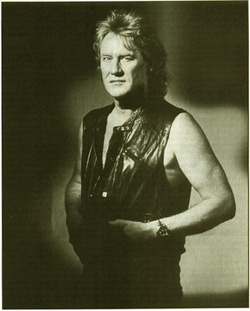
From
November 3, 1994 Article Written
The
Concert Was On November 5, 1994
Los
Angeles Times 2010
Alvin
Lee, the “Guitar God” of Ten Years After, Ventura (California)
– Bound. He plays “Basic Root Blues” high energy and he
doesn’t neglect the memory songs for his fans of yesteryear.
Attention
parents: Be careful who you bring home to your impressionable
offspring. If you were to invite Willie the Wino, Jack The
Ripper or The Pillsbury Dough Boy to the house, well, who
knows what strangeness may ensue?
Now,
once upon a time in scary olde England, the Lee’s brought
home famous blues dude “Big Bill Broonzy” and their boy,
young Alvin, ended up being a “Guitar God” fronting
“Ten
Years After”. Alvin Lee made several hit albums, millions of
dollars and drew plenty of rock fans who couldn’t get enough
of that wailing guitar.
Now,
nearly Thirty Years Later, Alvin Lee returns with a new album,
“I Hear You Rockin´”, and a Saturday night gig at the
venerable Ventura Theatre. The new album is a throwback to Ten
Years After’s 1966 self titled debut album. It’s bluesy,
but not boring, because Alvin knows too many licks to induce
drowsiness. Alvin could also write those mean blues lyrics.
From
“A Sad Song” a sample line: “My face in the mirror,
reminds me of you. It’s the one that you lied to, when you
said you’d be true”. But Ten Years After, among other
things, is remembered for perhaps the most famous song,
“I’m Going Home” on the endless “Woodstock” movie.
Recently Alvin Lee, who speaks slower than he plays guitar,
talked to me by phone from a Rhode Island hotel room.
Q.
- Where’s the
old Ten Years After guys. Chick Churchill, Leo Lyons and Ric
Lee?
AL.
– We had a reformation in 1989 to support our “About
Time” release. But we closed that down after a few months.
It was kind of like getting back together with your ex-wife,
it’s fine for a couple of months. Leo, has his own band
called “Kick” the other two, I’ve lost track of.
Q.
– Ten Years After, like a lot of other British bands,
started out as a blues band. How did you get those blues?
AL.
– My father was always playing this ethnic blues stuff
around the house, and both my parents played. Then one day, my
father brought home Big Bill Broonzy, and there he was sitting
in our living room playing, and blues was in my heart, from
the time I was twelve years old. I took lessons for a year and
learned all the chords, and I had my first band when I was
thirteen, it was called, “The Jail Breakers”.
Q.
– What was it like making the jump from small clubs, to the
giant venues that you played with Ten Years After?
AL.
– It wasn’t very satisfying playing the big arenas, but it
was good as far as a pay check was concerned. But the sound
was terrible, especially in those hockey arenas. The sound
would go on for thirty seconds after we’d quite playing.
Also, they didn’t have security staff back then, but real
police officers with guns. You can’t hear anything, you
can’t see anything, except for the backsides of policemen.
It just wasn’t very conducive for having fun.
We
used to do songs like “Woodchoppers Ball” but these songs
didn’t work at all in a big room. Again, the sound becomes
really heavy and we loose the “Rock `n´ Roll. Then when
we’d play a little club, there’d be trouble outside,
because everyone couldn’t get in. I just wanted to enjoy
what I was doing, but I wasn’t enjoying that at all.
Q.
– So being a “Rock Star” in the 1960’s and 1970’s
was good or bad for you?
AL.
– Absolutely, good and bad. I always wanted just to be a
blues guitarist, and I don’t think I was quite ready for all
that went with it, and I had what they refer to as “Head
Problems”.
There
were a lot of responsibilities, especially with the media
which were so overwhelming.
I’d
do twelve of these interviews in a day. Then we’d tour for
three months straight, then get two days off, then they’d
call and say, “You’re in the studio next week – hope you
have the songs ready”.
Q.
- Ten Years After went away when you guys changed your record
labels and released “A Space In Time” In the 1970’s
(1971) What happened there?
AL.
– It was entirely coincidental. “A Space In Time” is
about the time off that I managed to take off, to work on the
album. They’d be telling me, “Alvin, you can make a
millions of dollars in the next six months”. But I thought,
“I just made a million dollars in the last six months, and
it’s not doing me any good”. Anyway, I thought I wrote a
lot of good songs for that album. No longer do I let the pace
of work interfere with the creative forces. This will be just
a five week tour.
Q.
– Do you still play Ten Years After songs?
AL.
– Of course I still do, and “I’m Going Home” is the
last song. But for awhile I quit playing it. When we’d do a
gig I could hear people shouting for “I’m going Home”
after the first song and I’d tell them, “So, go home then”.
You know, Jimi Hendrix got tired of playing “Hey Joe”.
Then in 1979 or 1980 I saw Jerry Lee Lewis playing in
Birmingham, and he was going through his country and western
phase at the time, and he didn’t do any of his hits, I was
very disappointed. It made me realize, that if I didn’t play
the songs that people wanted to hear, they wouldn’t want to
come back and see me.
Q.
– What’s Alvin Lee’s brand of blues?
AL.
– We were doing stuff that was called blues rock at the
time, then it became underground rock, then it was psychedelic
rock, but it was all the same thing, really. It’s basic root
blues, high energy. I don’t describe it, I just play it.
Q.
– I read a review once that said you were just “ten fast
fingers and a pretty face”. What did the critics get wrong
about you?
AL.
– I suppose it was the whole “Captain Speed Fingers”
thing, the fastest guitar player, and all that. I never tried
to be the fastest; I even tried to slow myself down. A lot of
these new guys can play ridiculously fast, but there’s no
light and no shade, and most of them run out of licks in a few
minutes, anyway. Sometimes, it actually sounds faster, if you
play slower.
Like
the song says, I want to keep on rockin´. Those old guys like
John Lee Hooker, who must be what, 80? And he’s still going
strong!
Details:
Alvin
Lee with Nine Below Zero
The
Majestic Ventura Theatre, 26 Chestnut Street
Saturday
8:00 PM
Tickets Cost: $16.50
|
| To Stay Happy, Guitarist
Alvin Lee Only Needs A Bumper Crop of Blues:
Article by Michael Kinsman - Staff Writer
Date Book:
Alvin Lee with Nine Below Zero, 9
tonight.
Coach House San Diego (formerly The Café)
10475 San
Diego Mission Road, Mission Valley. $16.50; 563-0024.
Reprinted from original article from the San Diego Union
Tribune from November 16, 1994
Alvin
Lee, the hell-on wheels guitarist best remembered for searing
the crowd with his impassioned blues-rock at the 1969
Woodstock festival, is looking for eye contact. On the verge
of his first U.S. tour in four years, he's spent only three
days practicing with the band Nine Below Zero, trying to get
the feel of the music. "Eye contact is very important to
that", the British guitarist says from New Jersey. "You
can know the music, but you've got to get the feel, too. A lot
of times if you see the eyes of the gentleman, you can see if
they're getting it. Some things just come with a nod and a
wink."
Twenty-five years after his incendiary Woodstock
performance with Ten Years After on "I'm Going Home",
Lee is excited by the prospect of still playing music for
people. "All I've ever gotten out of music is the
pleasure of playing it," says the 49-year old
singer-guitarist, who appears tonight at the Coach House San
Diego (formerly The Café in Mission Valley). "Everything
else is secondary."
Lee's finest public moment-the
scorching Woodstock performance-may have also been his most
distressing professional moment. "That was really sort of
the beginning of the end, strange as that sounds," he
says. "As soon as the movie came out, it sort of boosted
Ten Years After to another level. We started playing
ice-hockey arenas, and it started getting out of hand. "There
would be this horrible sound ringing around the roof of the
arena, and I'd be on stage looking at the backs of policemen
with cotton balls in their ears. I like places where you can
react with the audience, but that wasn't happening. I had no
feel." Lee said, the arena shows forced the band to
change its sound. "We sort of auditorium-alized it,"
he says, coining a term. "It was sad because that really
was the end of the band."
The band lumbered on the road
for a few years, eventually calling it quits in 1976. An
outgrowth of several years of teen-age experimentation, Lee's
Ten Years After had earned a reputation as a British blues
band in the mold of Fleetwood Mac and Savoy Brown and had
risen high to pop stardom in 10 years. "I never really
wanted to be a rock star", Lee says, "I just wanted
to be a blues player."
He remembers that his father
collected jazz and blues records, particularly chain-gang and
prison work songs. "I was pretty lucky, really, to be
growing up around that," he says. "My father
listened to traditional jazz, some swing…I guess he was
basically a bebopper. We had a guitar that he would fool
around with, but he couldn't play much. He would plunk on
it."
A key moment for him came the evening his parents
invited American blues man Big Bill Broonzy to their
Nottingham home after a concert. "I was 12 years old and
they woke me up," he says. "I was sitting on the
living-room floor looking up at this giant black man playing
blues. That's when I decided I wanted to play the blues".
Lee forgot his clarinet lessons and started learning guitar
chords. Soon enough, he heard a Chuck Berry record and knew he
was hearing his future. "Chuck Berry sought of brought it
together for me," he says. "He was the first guy to
put the energy into the blues." And while pop music grew
in the 60's to encompass social conscience, Lee was having
none of it. "Music should stand on its own," he says.
"I never liked those deep heavy messages. I liked the fun
in music. I'm sort of a Don't Step On My Blue Suede Shoes-Come
On Over, Baby, There's A Whole Lotta Shakin' Going On, kind of
guy.
Eventually, Lee's blues became supercharged rock,
dependent on his lightning-quick playing. "In a way, I
think I may have started this frenetic guitar-soloing stuff,"
he says. "They used to call me Captain Fast Fingers, but
I always tempered it with slow parts. The dynamics really are
what music is all about, not how fast you can play. What Lee
enjoys is playing guitar riffs that are melodic and graceful.
On his "I Hear You Rockin´ " recording released
earlier this year, he mixes his leads with the slide guitar of
friend George Harrison. Lee has been recording with Harrison
on and off since 1973 and until a few months ago lived only a
few minutes away from the ex-Beatle west of London.
"We
have the sort of relationship where we can pop in on each
other", Lee says. "I think he likes that because his
life is made of appointments. He doesn't have many friends who
drop in for a cup of tea, play guitar for 10 minutes and then
leave. We both seem to enjoy those moments."
Lee refused
to participate in last summer's Woodstock festival, fearing
that the magic of 1969 was being sold out to greed. "I
have good memories of Woodstock," he says, "but I
didn't want to repeat something that had been an accident.
This time it just seemed like there were a lot of people
trying to make some money. If they really wanted to have a
Woodstock festival, I think they should have had people like
Michael Jackson and Bon Jovi. The first Woodstock had all the
biggest names of the day. Why shouldn't this one?
For now, Lee
is happy to be playing music that people want to hear in cozy
clubs. "It's a good thing for that." He says. "It's
too late for me to get a proper job."
Note: The
concert was really a two night event, that took place on
November 6th and 7th 1994. The exact location was San Juan
Capistrano, California. The concert was recorded and released
as a bootleg, the cover of 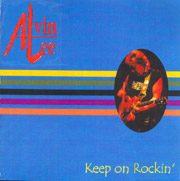 which can be seen
below. which can be seen
below.
Alvin Lee's
backing band, Nine Below Zero at that time consisted of:
Garry McAvoy (ex Rory Gallagher) on bass guitar
Brendan O´Neil on
drums
Alan Glenn on guitar and harmonica |

|
|